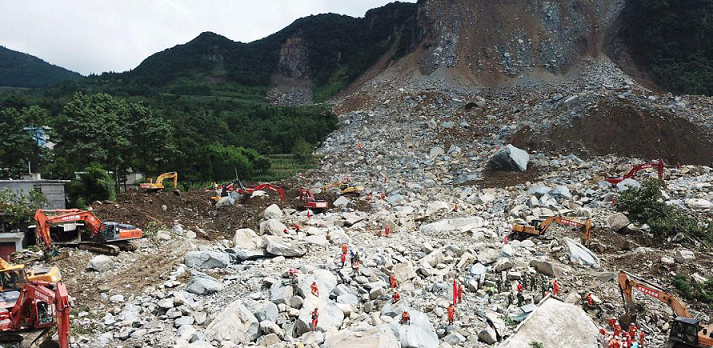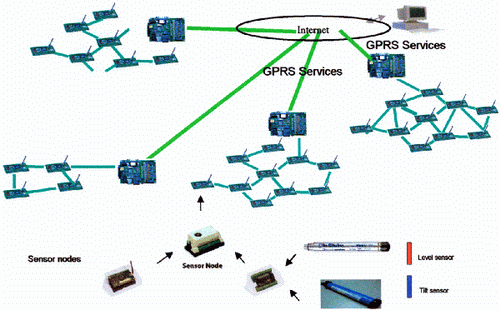The wireless tilt sensor uses wireless technology to transmit data, has remote control and management functions, and can accurately measure the health of structures for a long time. Compared with traditional networks, wireless tilt sensors have high stability, can adapt to complex and changeable environments, monitor places that are difficult to reach by humans, and can realize data transmission even in places with unstable or no signals. It has gradually become structural health monitoring the preferred choice.
The terrain of our country is complex and diverse. The terrain is high in the west and low in the east. There are a large number of mountains and basins in the southwestern provinces. They are high-risk areas for disasters such as landslides and mudslides. Every year, landslides cause nearly 1,000 casualties and economic losses of several billion. In the summer of 2020, there will be continuous heavy rains in many places. After the unstable landforms are eroded by rainwater, frequent floods, mudslides, landslides and other disasters have occurred, which have seriously affected people's life and property safety and daily life.

Establish a long-term high-precision health monitoring system, real-time monitoring and early warning of mountains and other structures, combined with data analysis to achieve individual and regional risk assessment, improve management efficiency and emergency response levels, and effectively avoid casualties and economic losses.
The wireless tilt sensor integrates a sensor detection module, a data processing module, a wireless communication module and a power supply module. In areas prone to danger, several sensors are distributed to monitor the movement of the mountain. Mountains are often composed of multiple layers of soil or rocks. Due to the different physical composition and degree of erosion between different layers, their moving speeds are different, and sensors at different locations will collect and return different data.
Since the deployment monitoring areas are ly mountains and the field, there are many restrictions on the layout of power, communication networks, etc. The number of sensors connected through wired connections is limited, wiring is difficult, and it is not suitable for geological environments with complex terrain and many monitoring points. The wireless tilt sensor can automatically supply power, and can perform digital-to-analog conversion and signal transmission without wiring. The installation is simpler, which greatly reduces the maintenance cost afterwards, and there is no direct electrical connection between each other and there is no problem of mutual interference.
Wireless tilt sensors send data information through wireless gateways, satellite earth stations and broadband networks. Sensor nodes have routing functions. They form a network with base station nodes hierarchically and autonomously to achieve long-distance communication. The sensor collects the deformation and displacement of the structure. After acquiring the data of each sensor, the data is fused and processed, and finally arrives at the monitoring center. The monitoring personnel can remotely obtain the trend and intensity of the mountain deformation, and judge the threat. Provide early warning information for nearby residents and passing vehicles.

The mountainous area in our country accounts for more than two-thirds of the total area. At present, wireless tilt sensors have been used in multi-region mountain structure monitoring. The development of modern IoT sensing technology has promoted the development and application of more new intelligent monitoring products, and our early warning of disasters has become more and more comprehensive, automated, and controllable.

 +86 189 2129 2620
+86 189 2129 2620
+86 176 0611 8008 sales@bwsensing.com
sales@bwsensing.com














